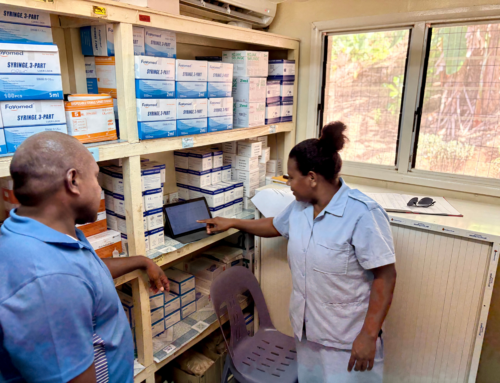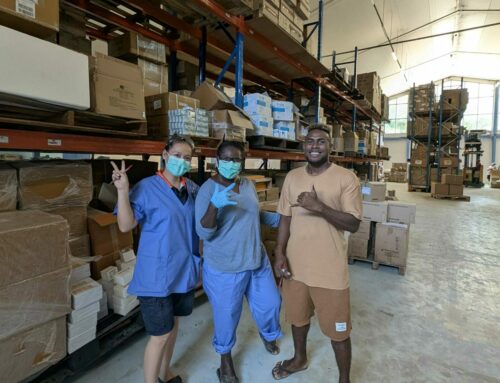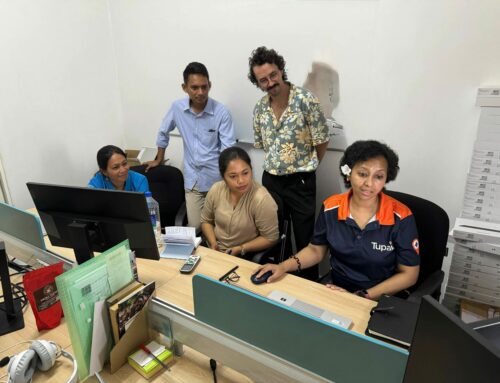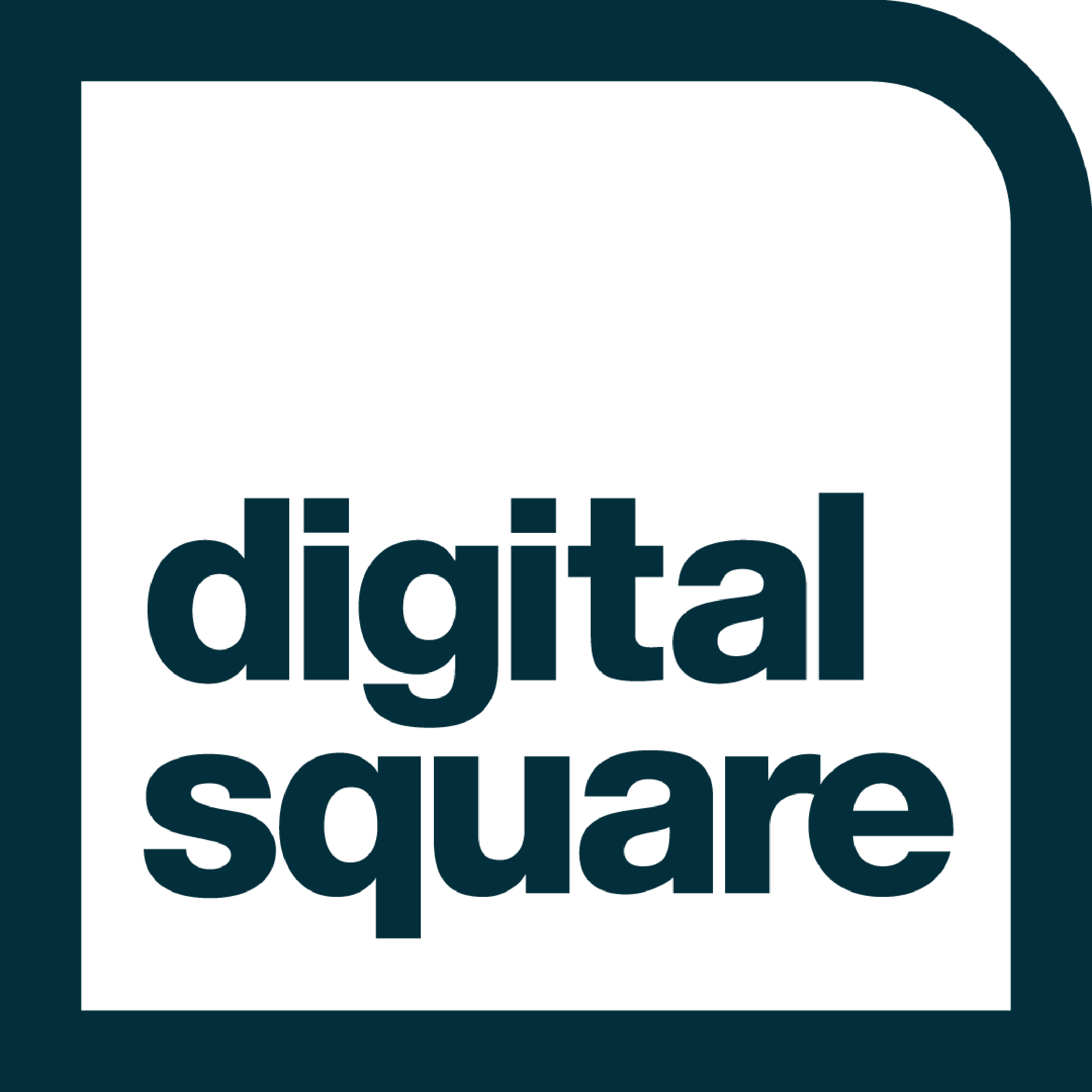We’re using mobile data collection and complex mapping technology to honour a man who used only the wind and stars to get around.
Tara sits in a small, but meticulously clean clinic at the southernmost point of one of Vanuatu’s more remote islands. The levers of every window are open, blowing a lazy tropical breeze into the consultation room along with the occasional moth and stray leaf. It’s a little dim in here, her solar panels stopped working a few months ago, and she tells us that more than once in recent weeks she has had to deliver a baby using only the beam of her head torch.
It’s not complex technology, it’s fierce resourcefulness. And, it’s pretty remarkable.
It’s also a telling contrast to the complex tech we’ve built to support her work. Sitting in front of her, recording her responses in our app, we are providing her a link with top health decision makers in the country and the region to help, for one thing, get the solar up and running so she can continue to provide healthcare to more than 6,000 people in the surrounding villages.
We’ve spent the last 10 months meticulously designing the tech that needs to support Tupaia.org, a project that aims to map health facilities in 6 participating countries in the Asia Pacific region (more coming online in 2018).
The project is named after the legendary Polynesian navigator who joined Lt James Cook on his voyages through the Pacific. He was known for his incredible skill, directing the explorers from island to island by reading the winds, waves and the stars.
Our mapping is certainly more dependent on technology than in Tupaia’s time. Data is aggregated in real time from a number of sources, including HIS, eLMIS and Mobile eLMIS, whilst the Tupaia MediTrak app collects answers to a myriad of questions about medicines availability, infrastructure, equipment, finances, services and disaster preparedness. This app syncs whenever it detects an internet connection, sending the data to our online interactive map at Tupaia.org.
This map allows governments to get a birds-eye view of the health of their healthcare system, so to speak. They can see, for example, which clinics have functioning refrigerators to store vaccines, where medicine is overstocked or undersupplied, and they can also track the treatment of common conditions such as childhood diarrhoea. Importantly, they use the app to direct their often limited resources to where they are needed most. If you visit tupaia.org today, you can already see data for around 900 facilities in Solomon Islands, Kiribati, PNG, Tonga, Timor-Leste, Tokelau and, of course, Vanuatu.
You and the general public can access a basic level of information about facility locations and the services they provide (more than enough to make a data nerd froth at the mouth), and Governments control the access to more detailed information such as medicines availability.
This data comes from several sources, including our free data collection app, Tupaia MediTrak (Available on IOS(link) and Google Play (link)), and mSupply Mobile, an open source stock management app (Available on IOS(link) and Google Play (link)). mSupply is a desktop and mobile electronic Logistics Management Information System which is used in nearly 30 countries – it regularly synchronises its data to central servers, meaning that any facility with mSupply Mobile have their stock availability displayed on tupaia.org in near-real-time.
mSupply desktop is built on a 4D platform whilst both our apps are built in React Native – Tupaia MediTrak syncs to a mySQL database and data from all sources are aggregated on a DHIS2 instance and then configured in NodeJS. www.tupaia.org is built on a React front-end.
But despite the tech, our most valuable data still comes from these face to face interactions. Our Tupaia teams work with local Ministry of Health Pharmacists to physically visit every clinic or hospital around the country. We sit with nurses and doctors, talk about issues in the ordering and delivery of medicine, building maintenance or difficulties accessing further training when you might need to take two boats and a truck to get to the nearest airport.
And that is our biggest lesson from this project so far. You can put in place the most advanced, user-friendly tech in the world, but you can’t properly capture these challenges by looking at a spreadsheet, running an email survey or chatting with the top dogs. In the Pacific, the concept of storying is paramount – to show respect to a person and their ideas, you must be willing to sit, talk and make the effort to hear what they have to say in their own time. And it is this practice that has shown the staff in these remote clinics that we’re serious. We know that the strength of a system comes from supporting every cog, from the clinic, to the regional hospitals right up to the health minister themselves.
Technology is paramount but it only supports the oldest data collection method in history.
We hope that by combing the old with the new, we are doing Tupaia proud and our bit to create stronger, more resilient healthcare systems in the Asia Pacific region.
If you would like to chat about the project or apply for a higher level of data access on Tupaia.org, please email contact@tupaia.org with your request.
You can check out videos of our work in Vanuatu and follow us on Facebook or Twitter as we continue to trek around the Pacific.
Tupaia is a project funded by the Australian Government’s innovationXchange program – https://ixc.dfat.gov.au/tupaia-set-to-save-lives/
Sometimes when you start out with a problem, and map a route to its solution, you find the way isn’t so straightforward. You might roll and ankle, puncture a tyre or get sunburn. But sometimes, when you’re sitting in the gutter feeling sorry for yourself, that’s when inspiration strikes.





